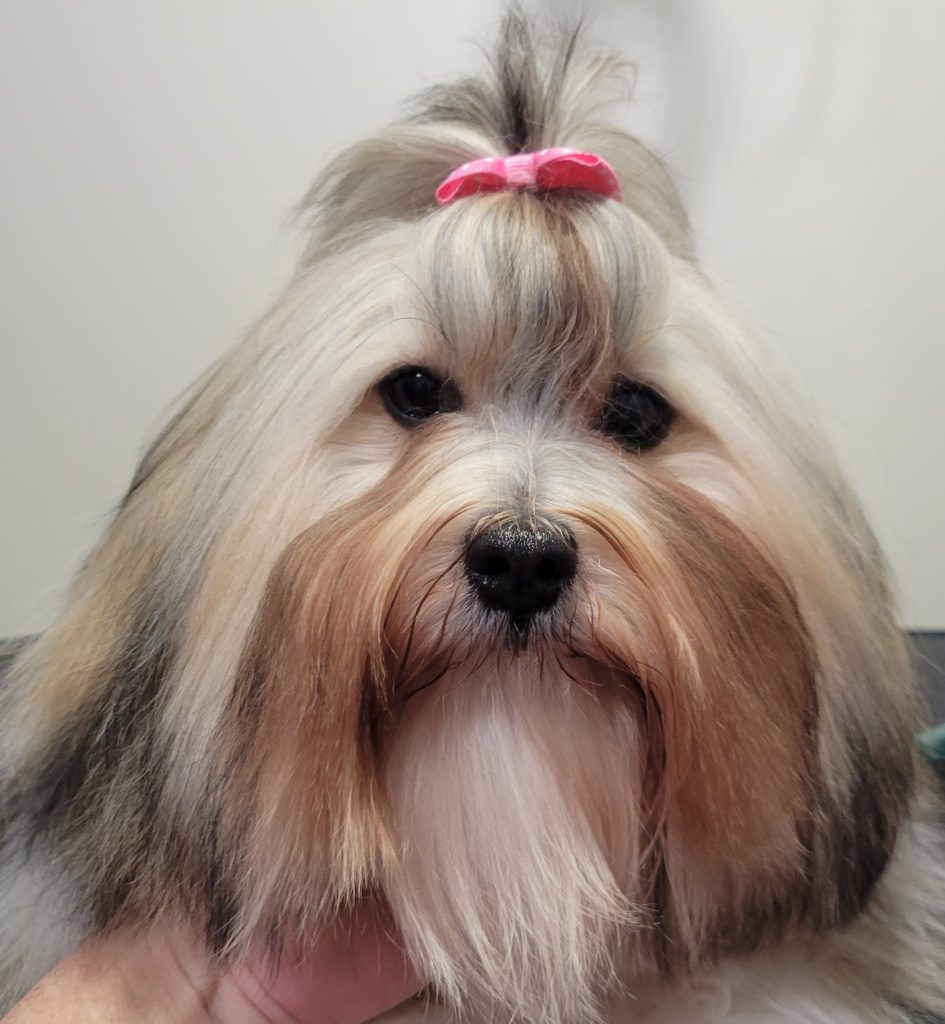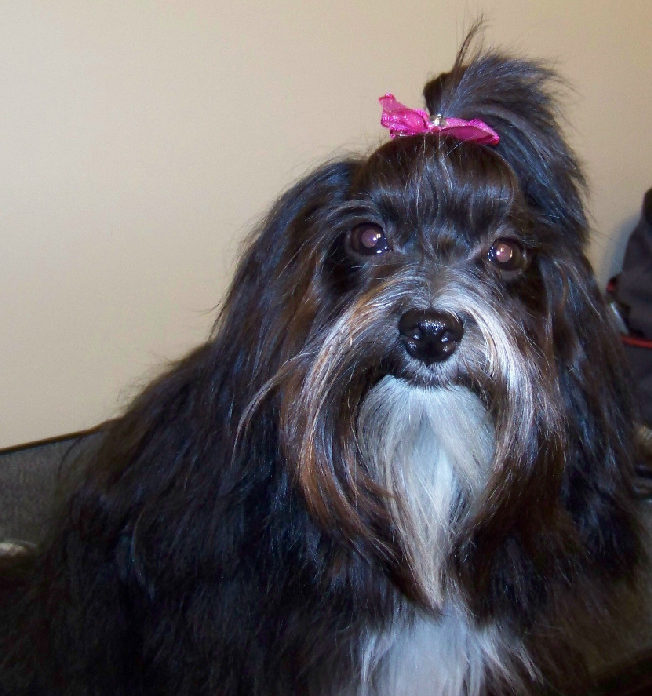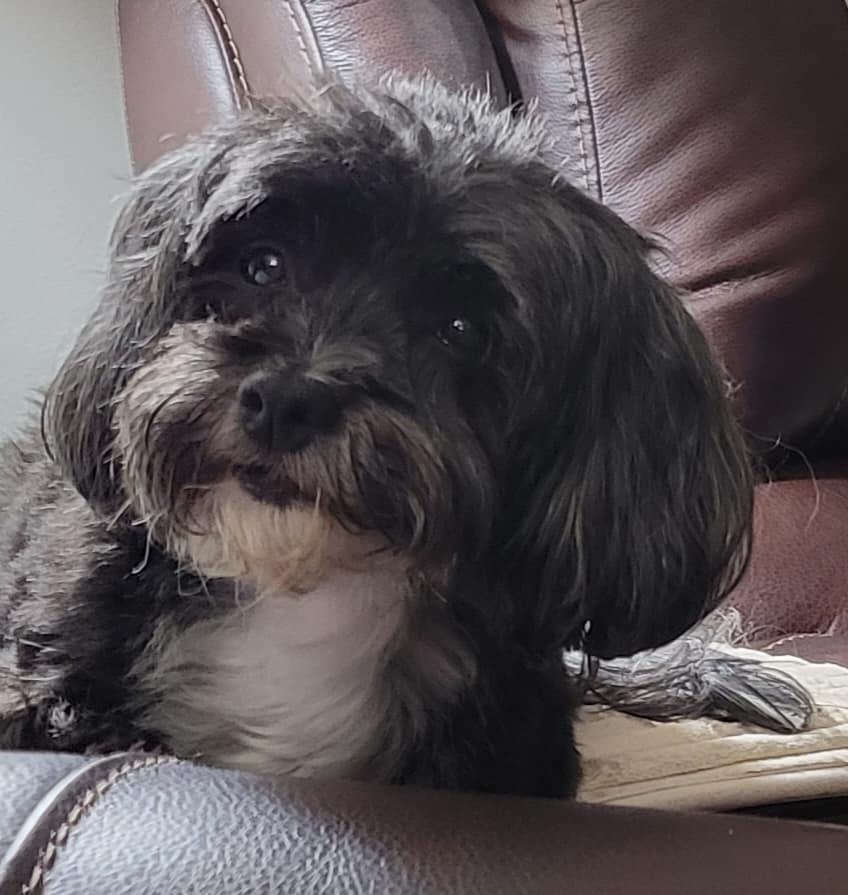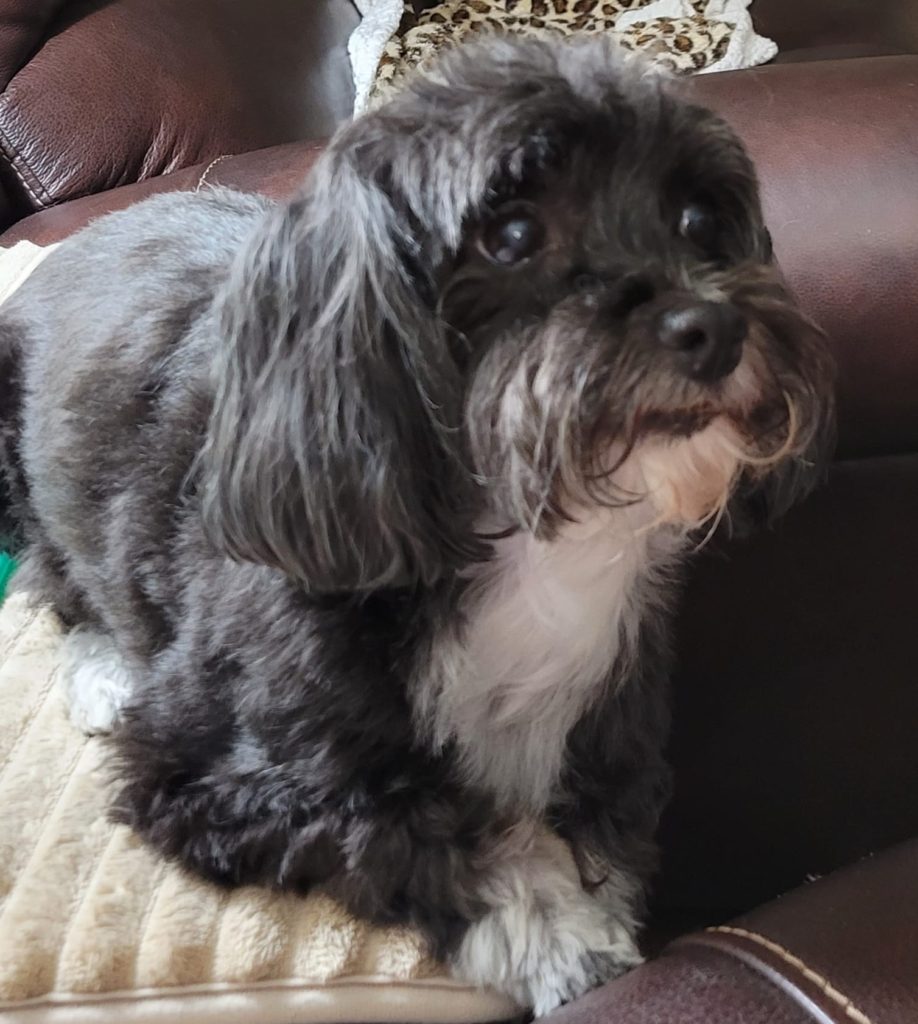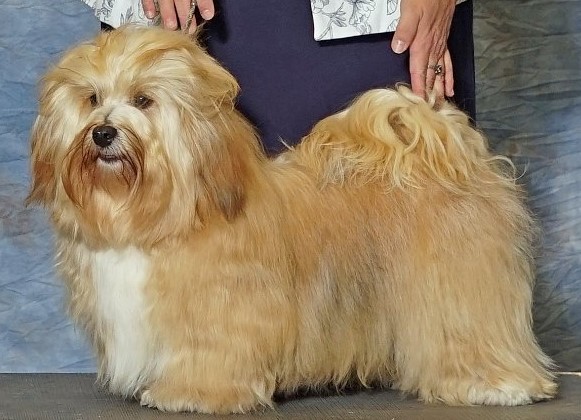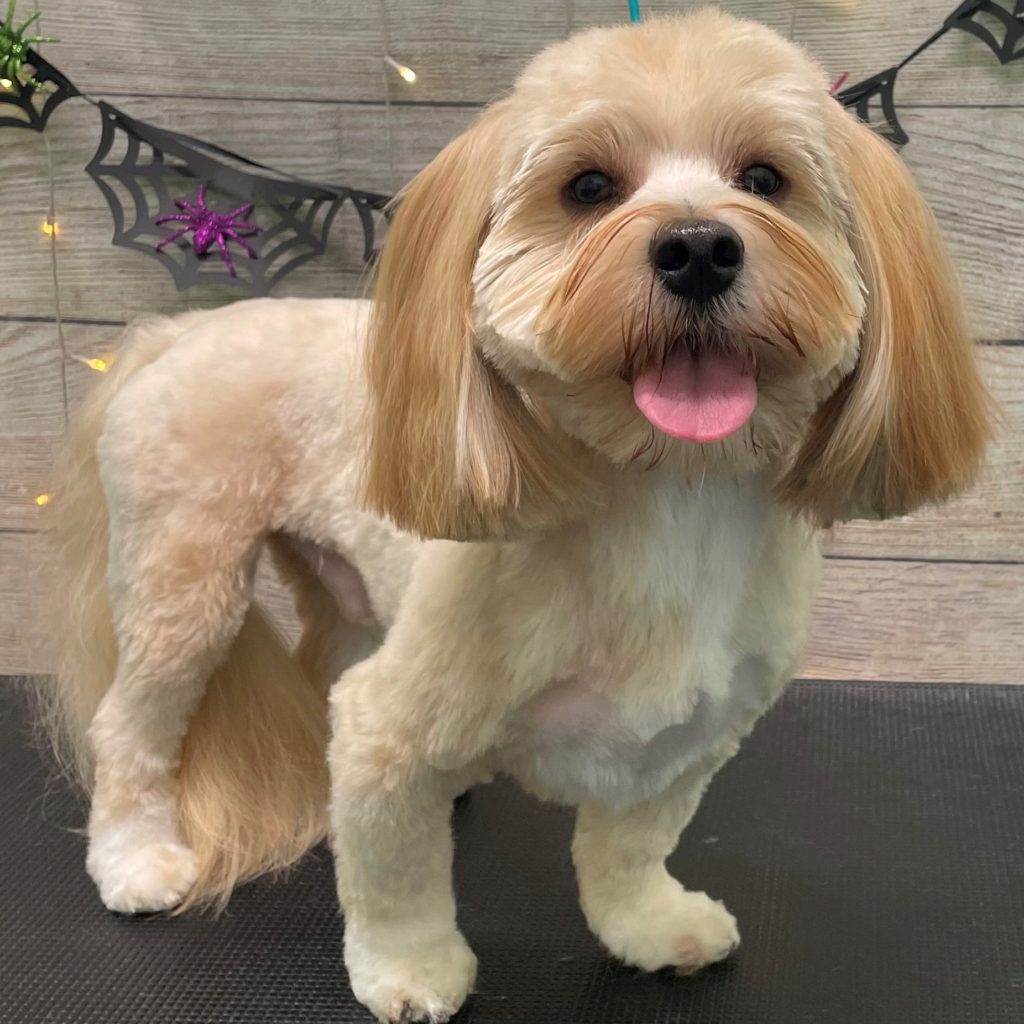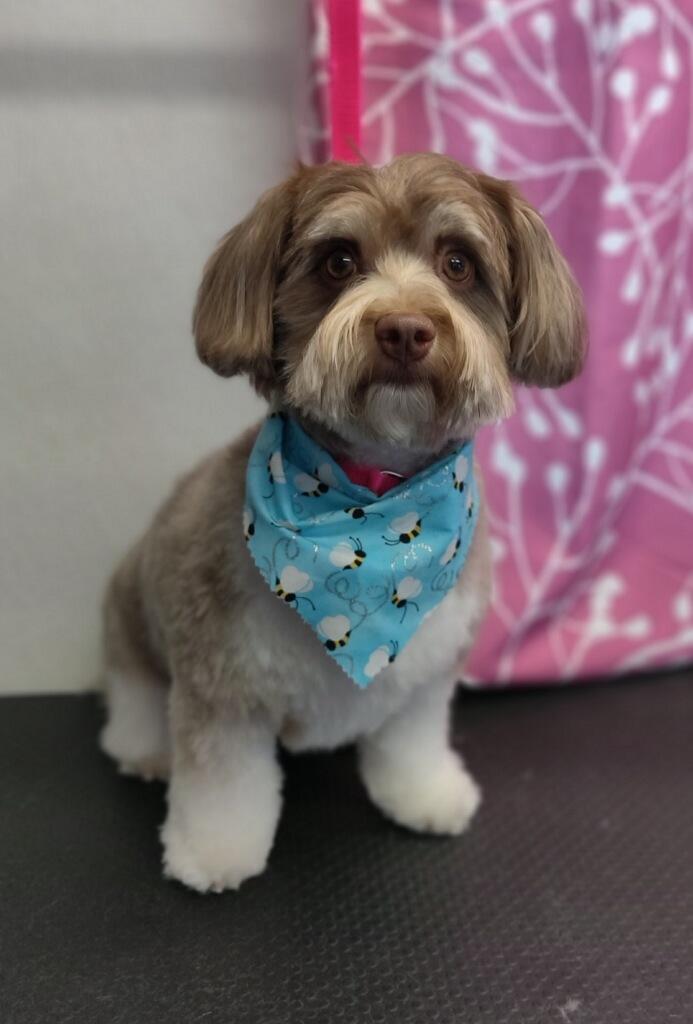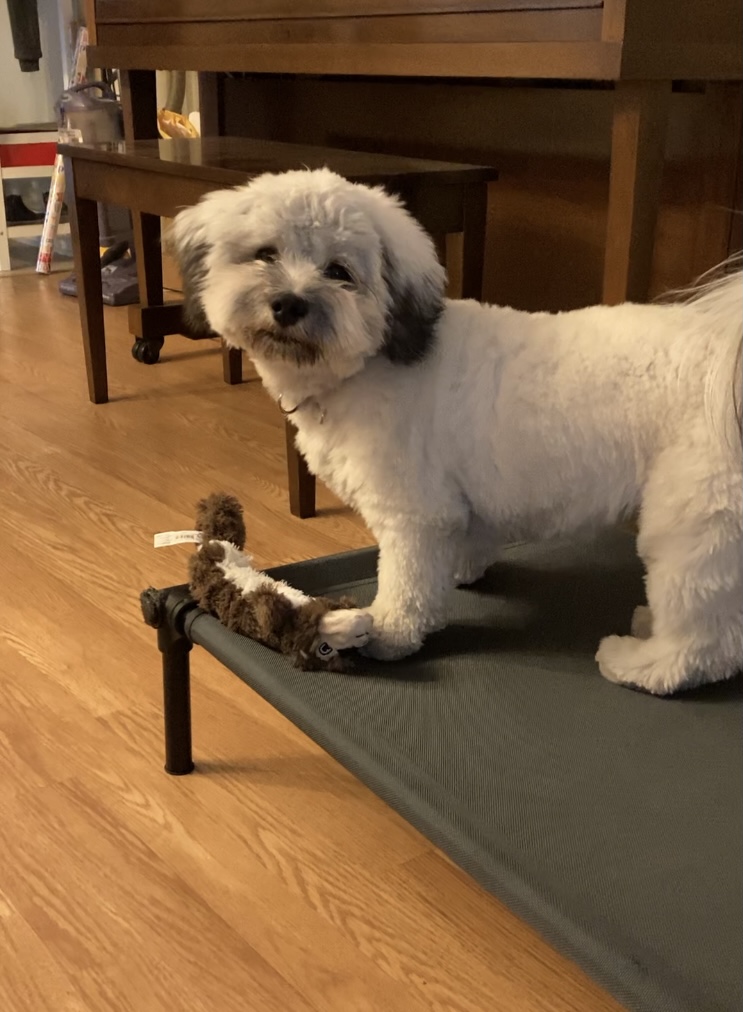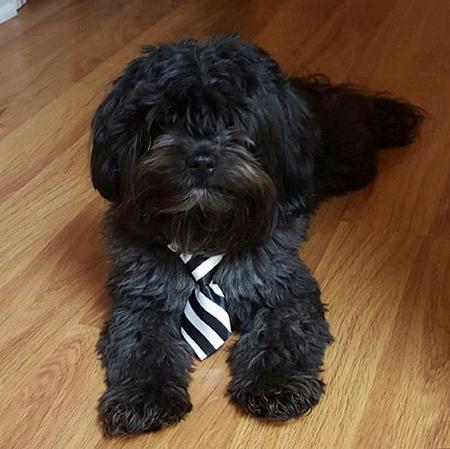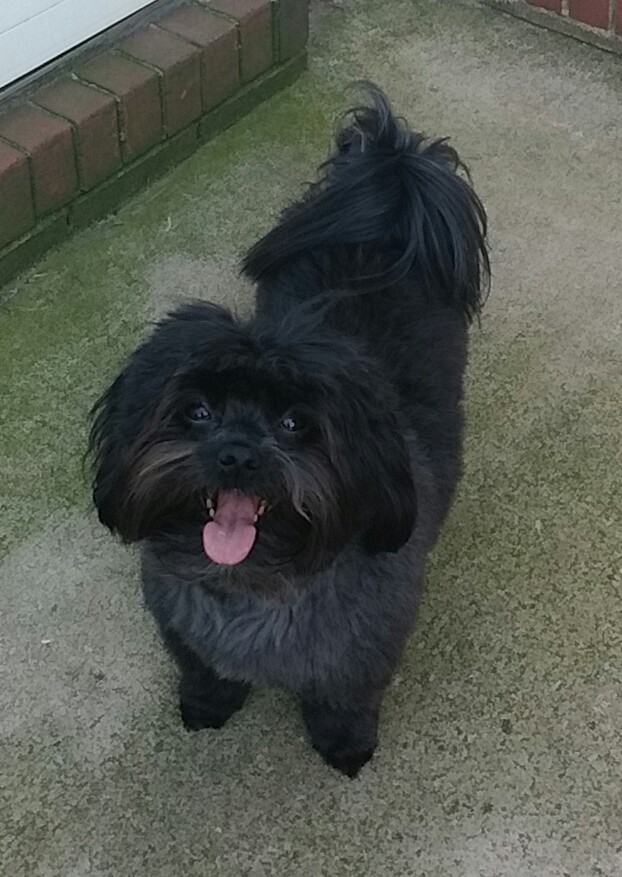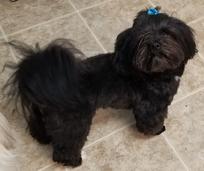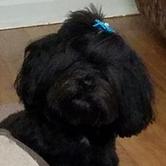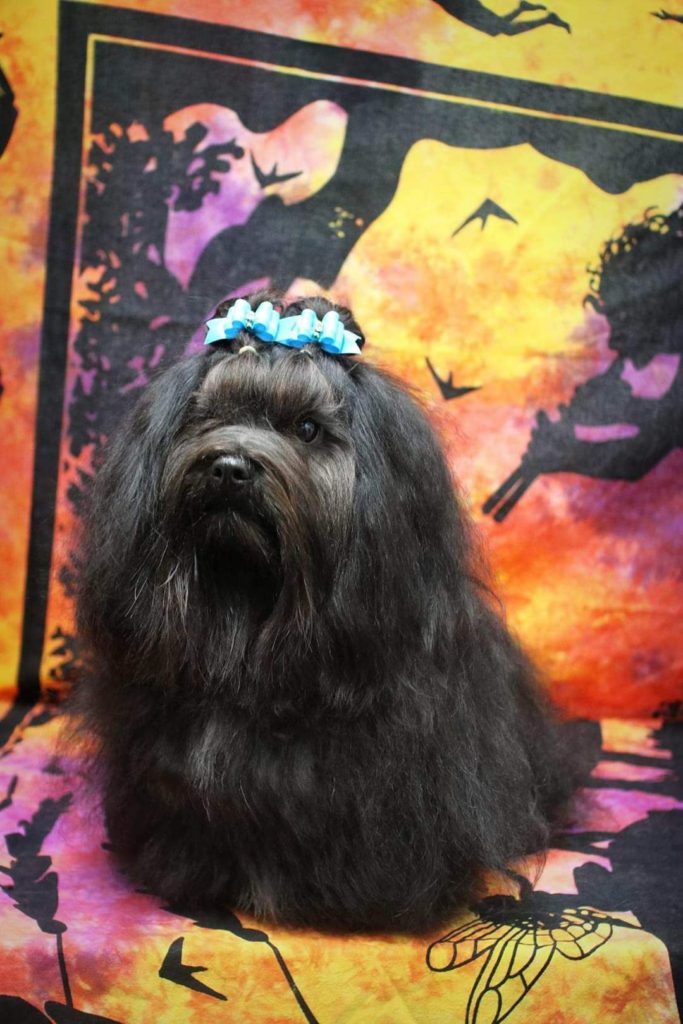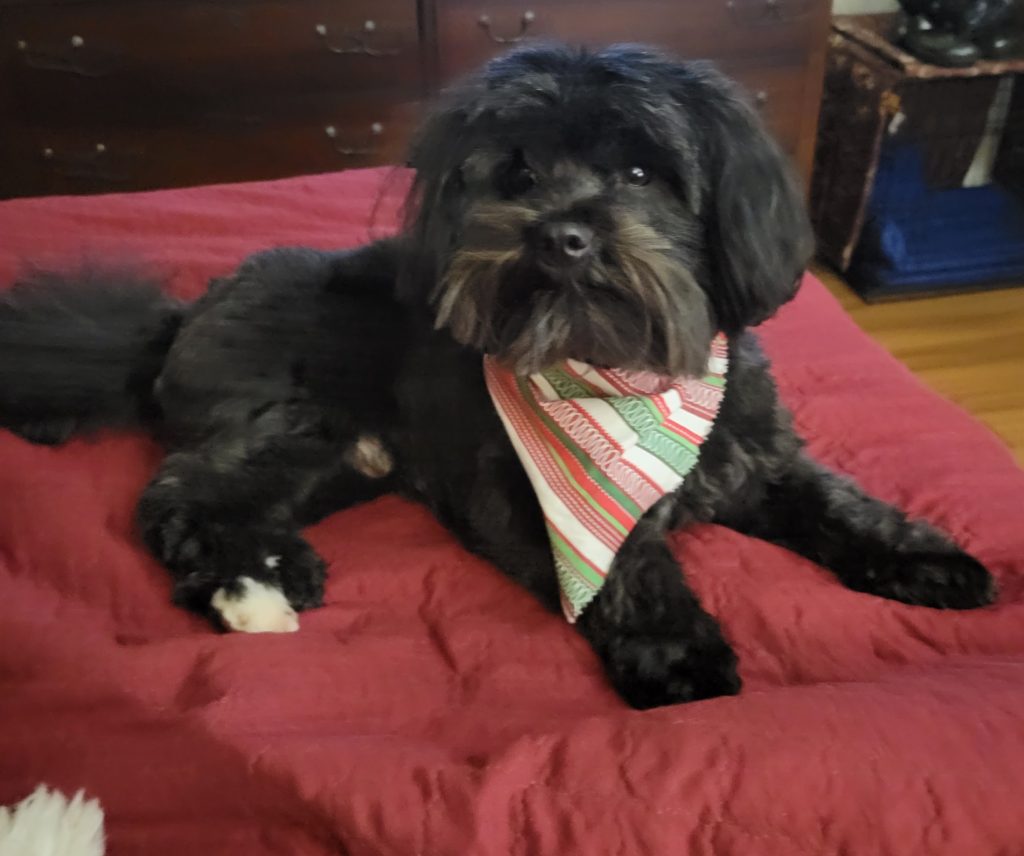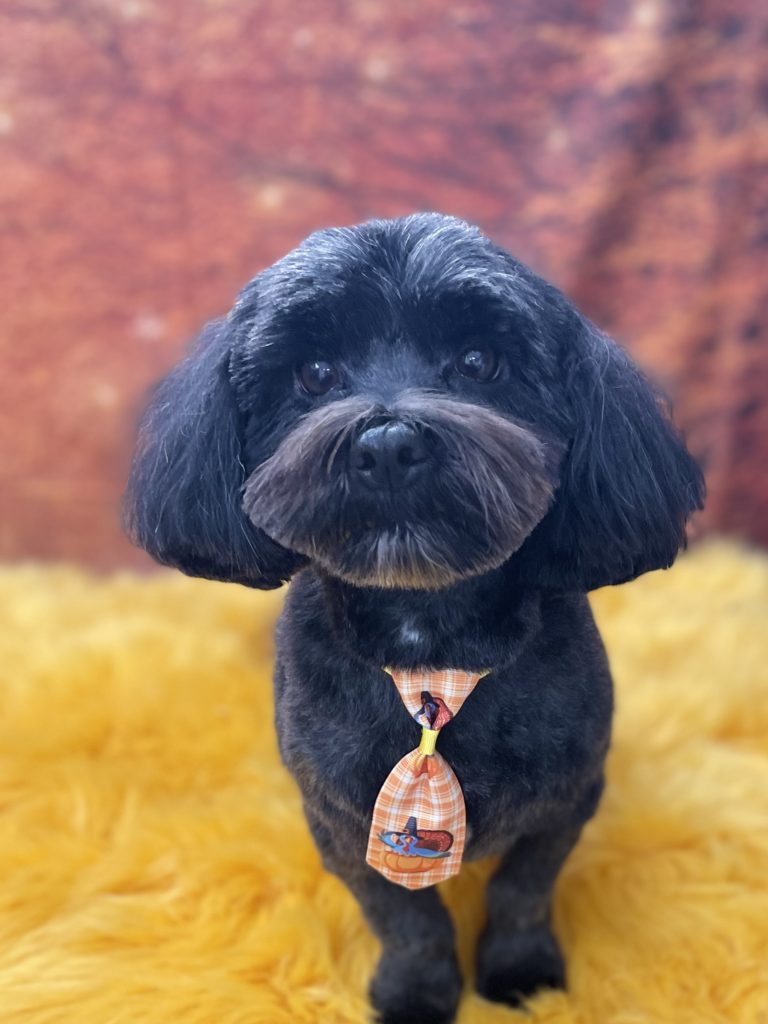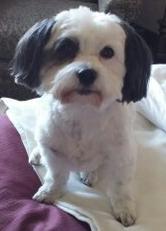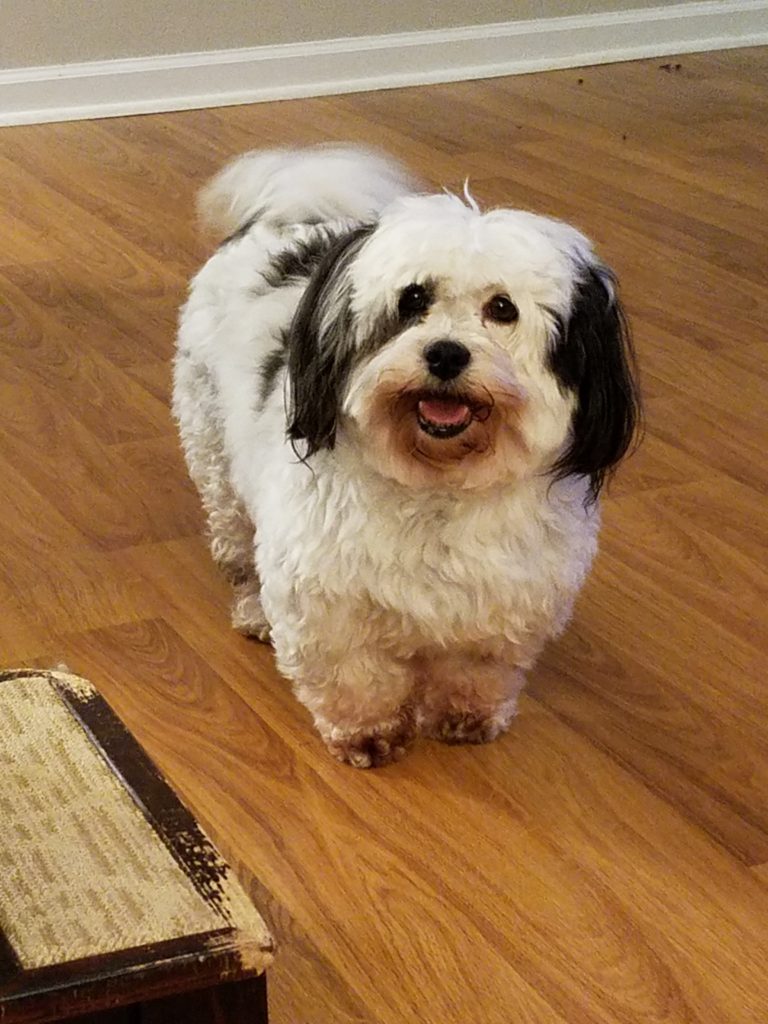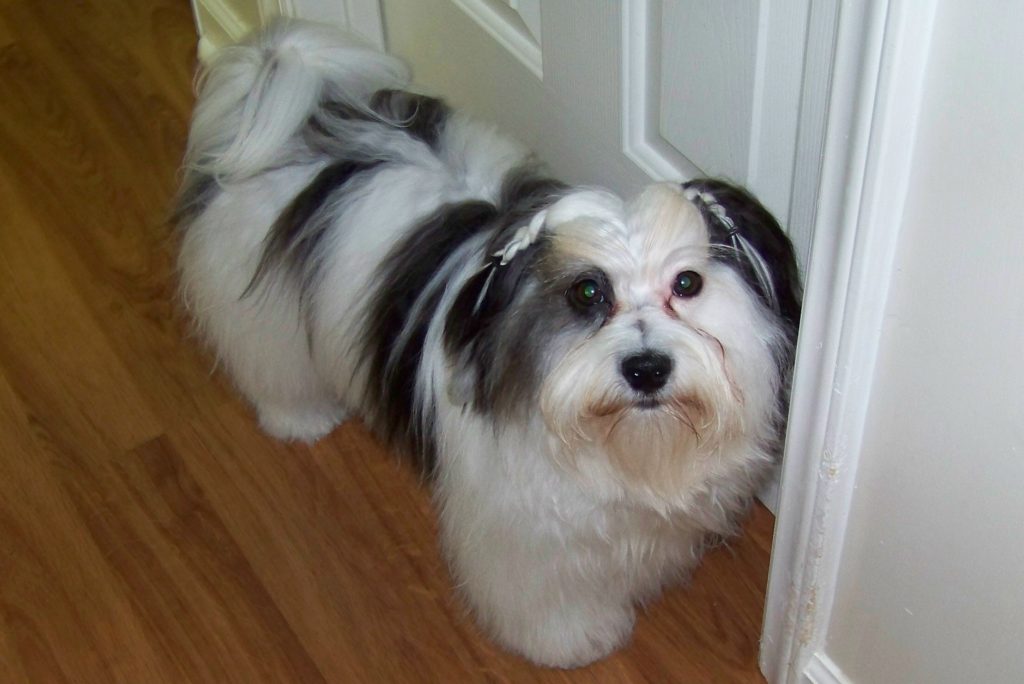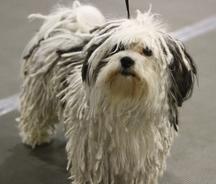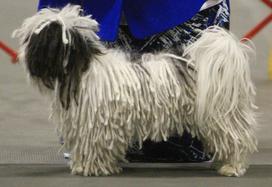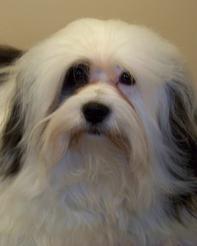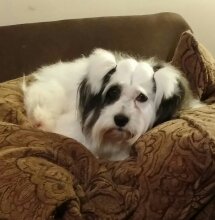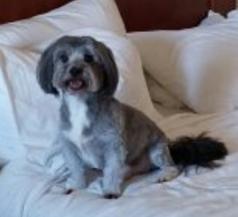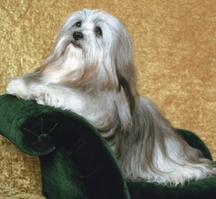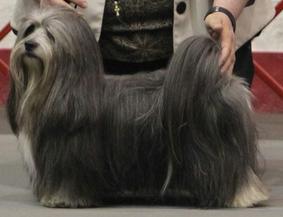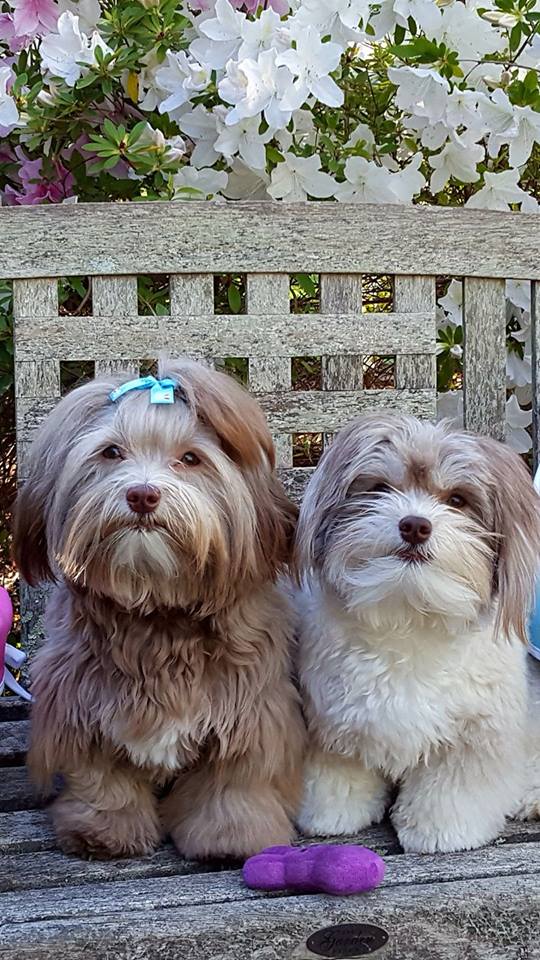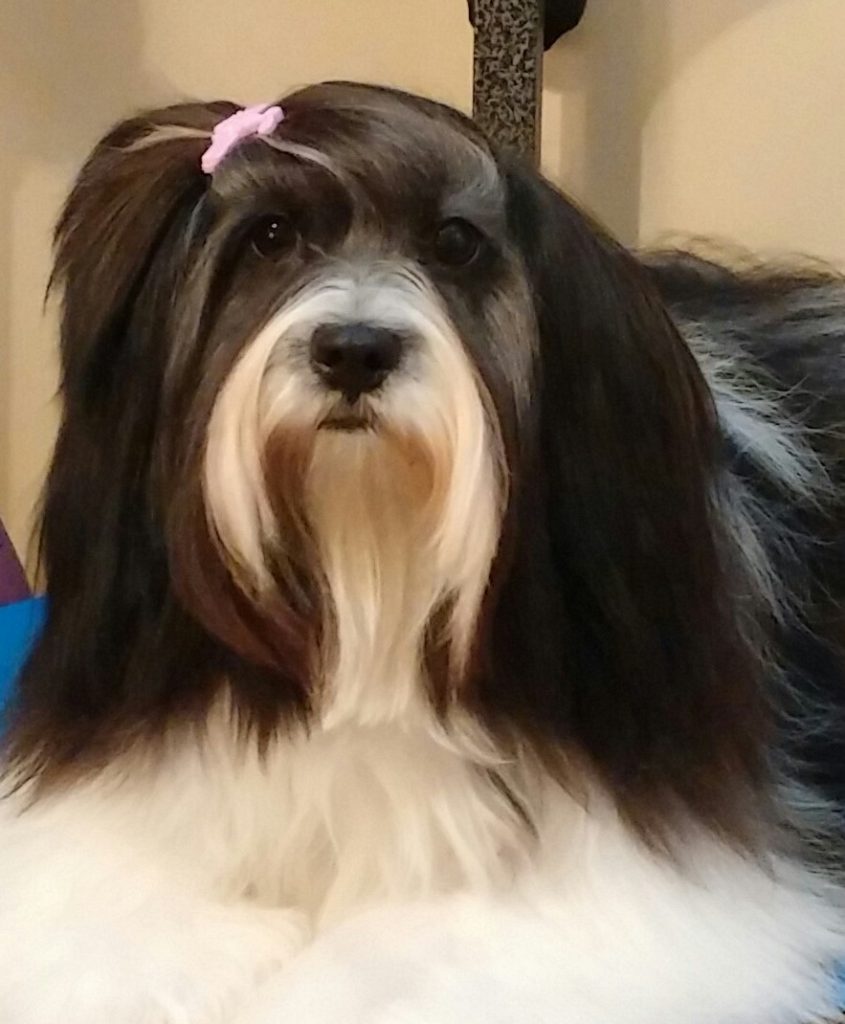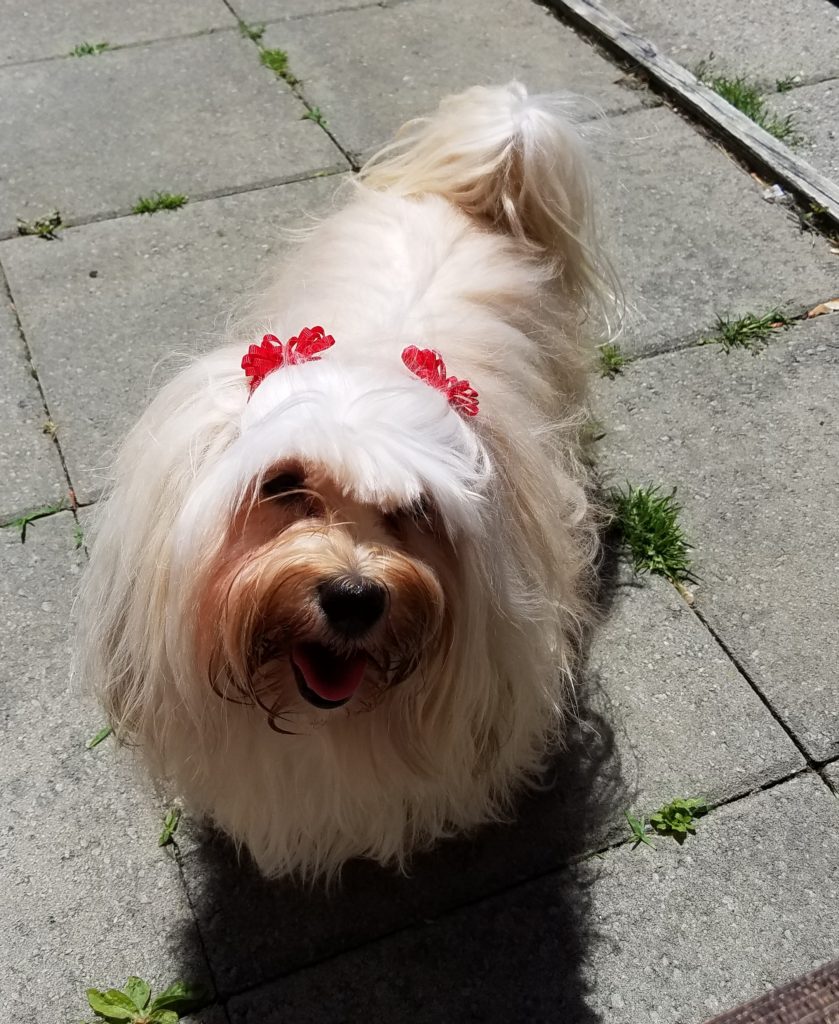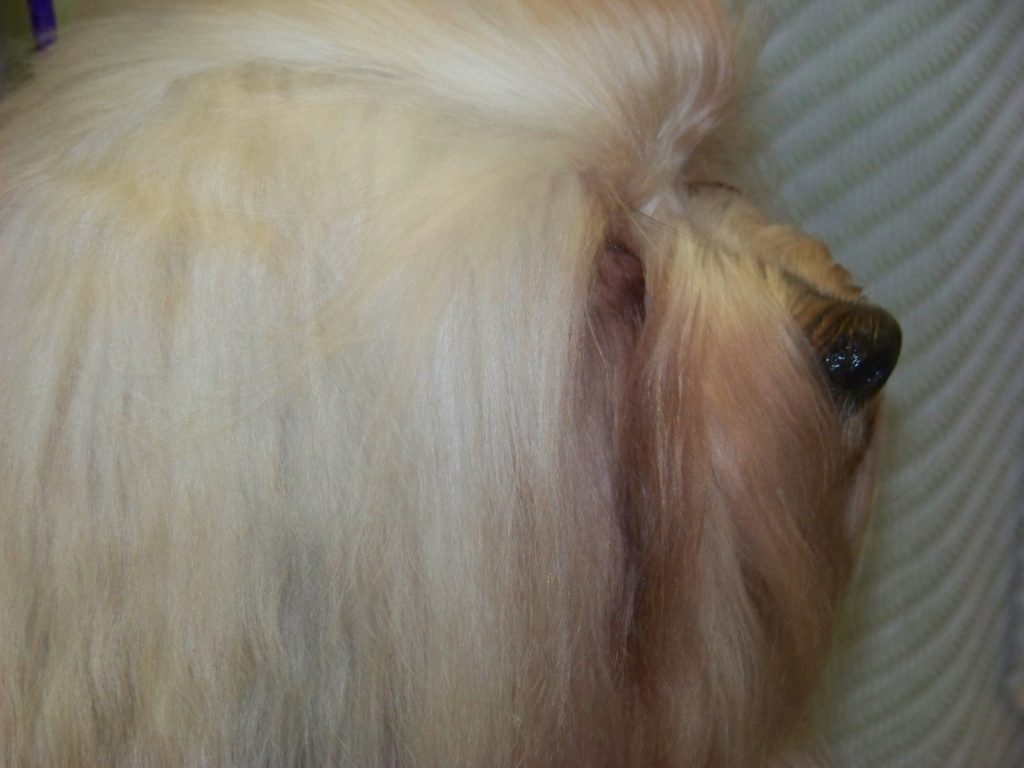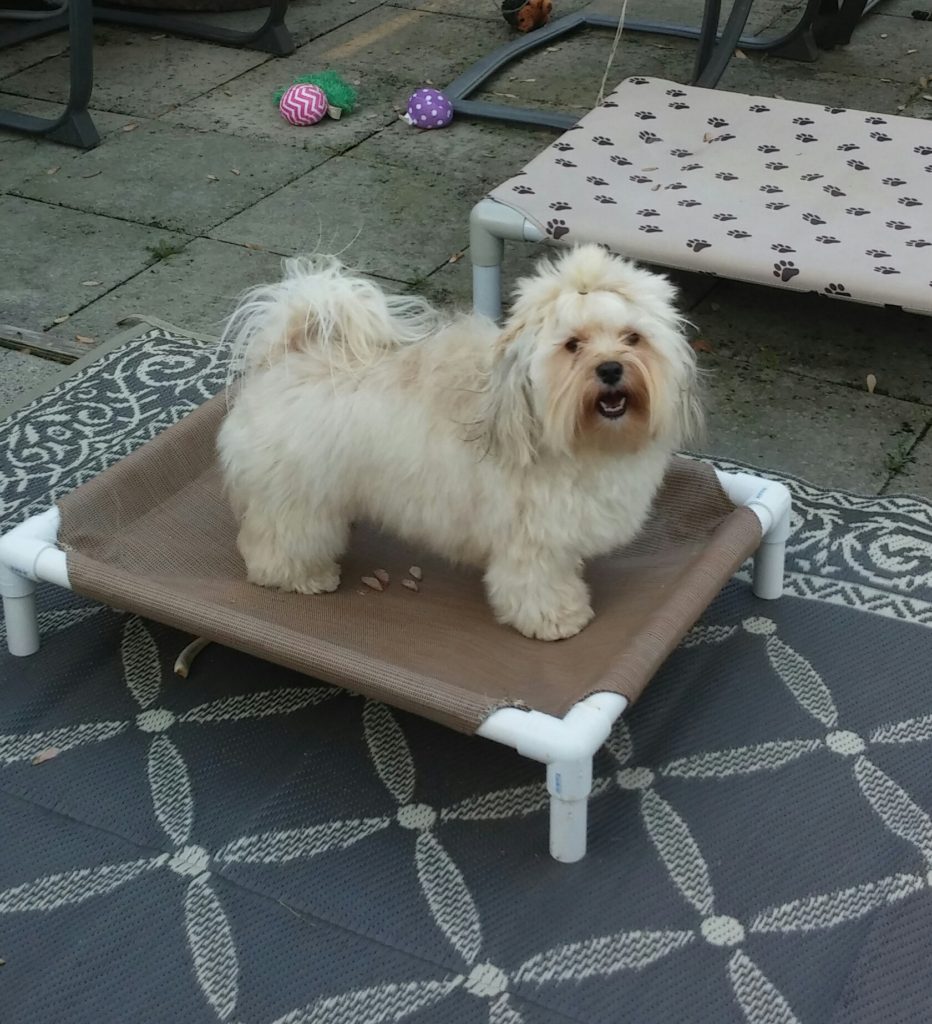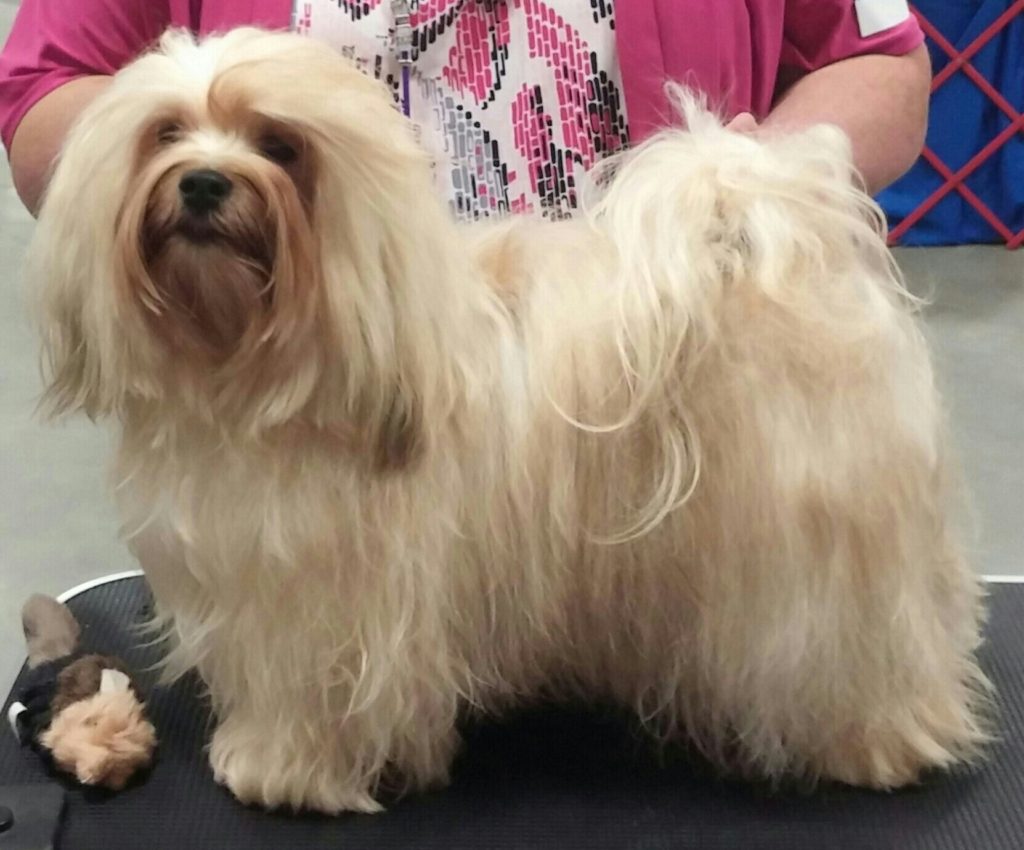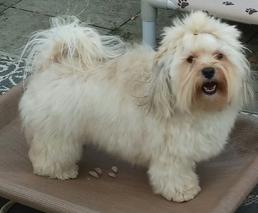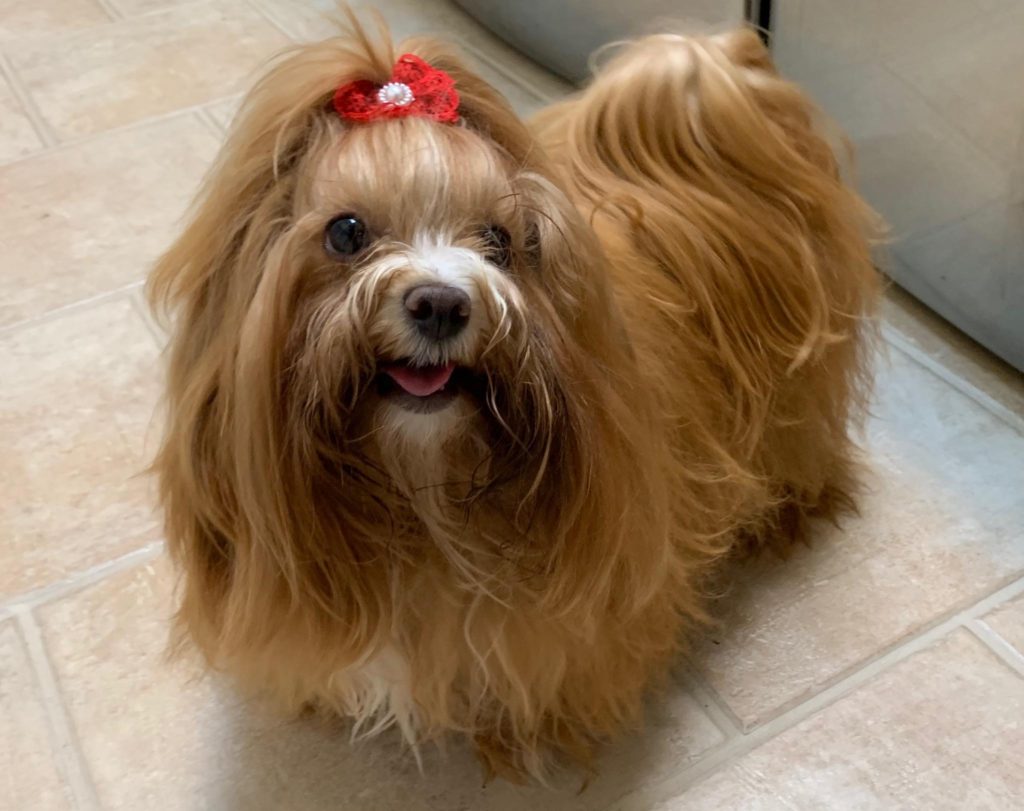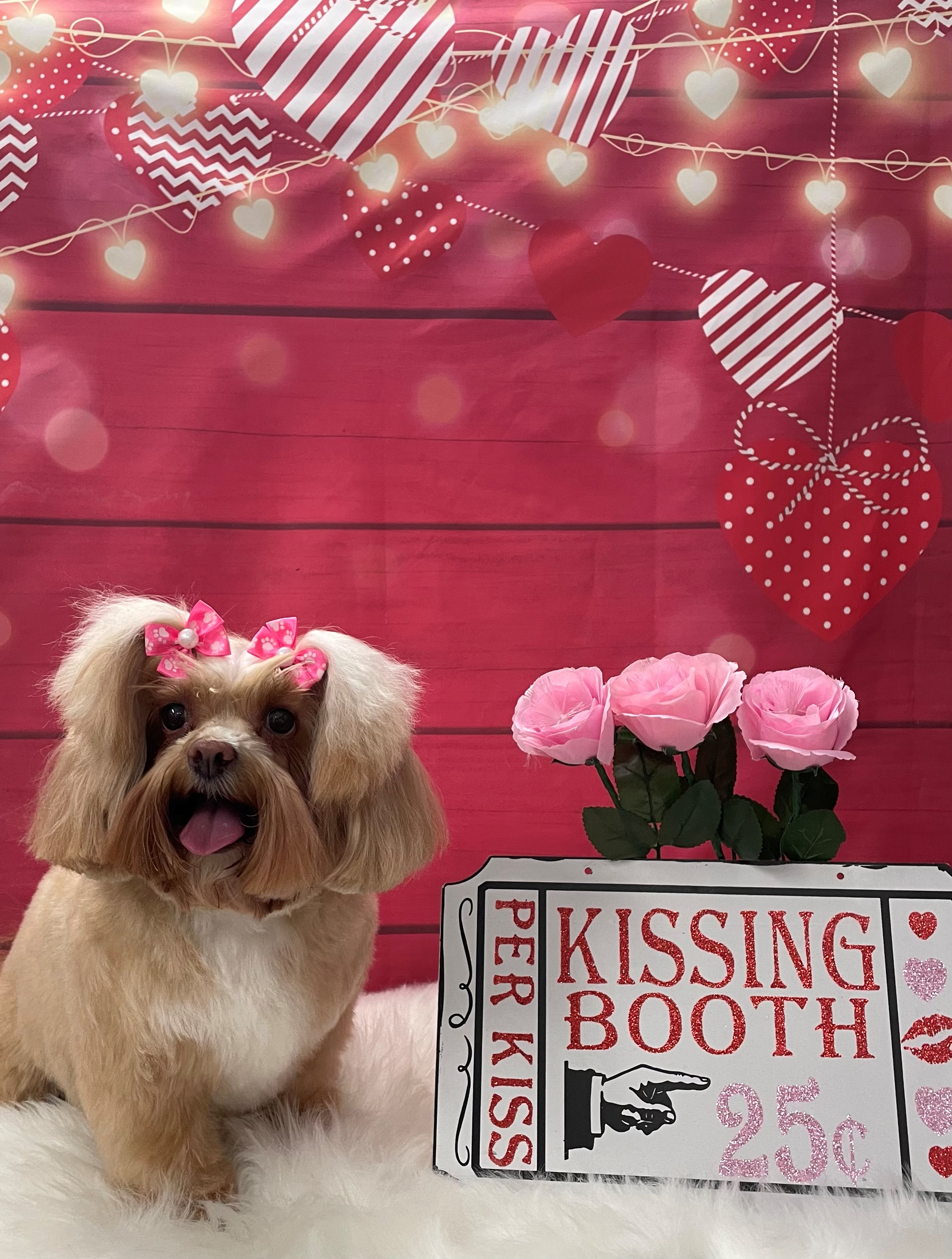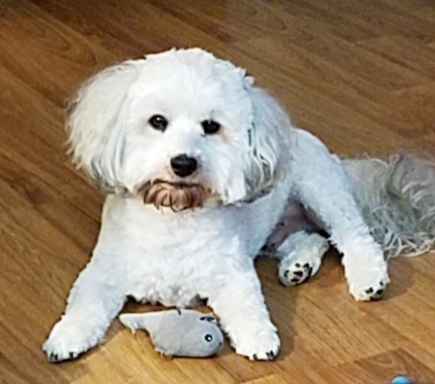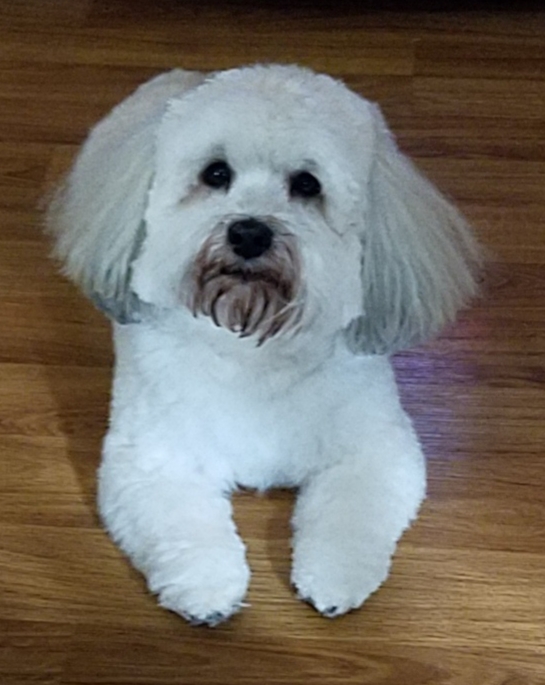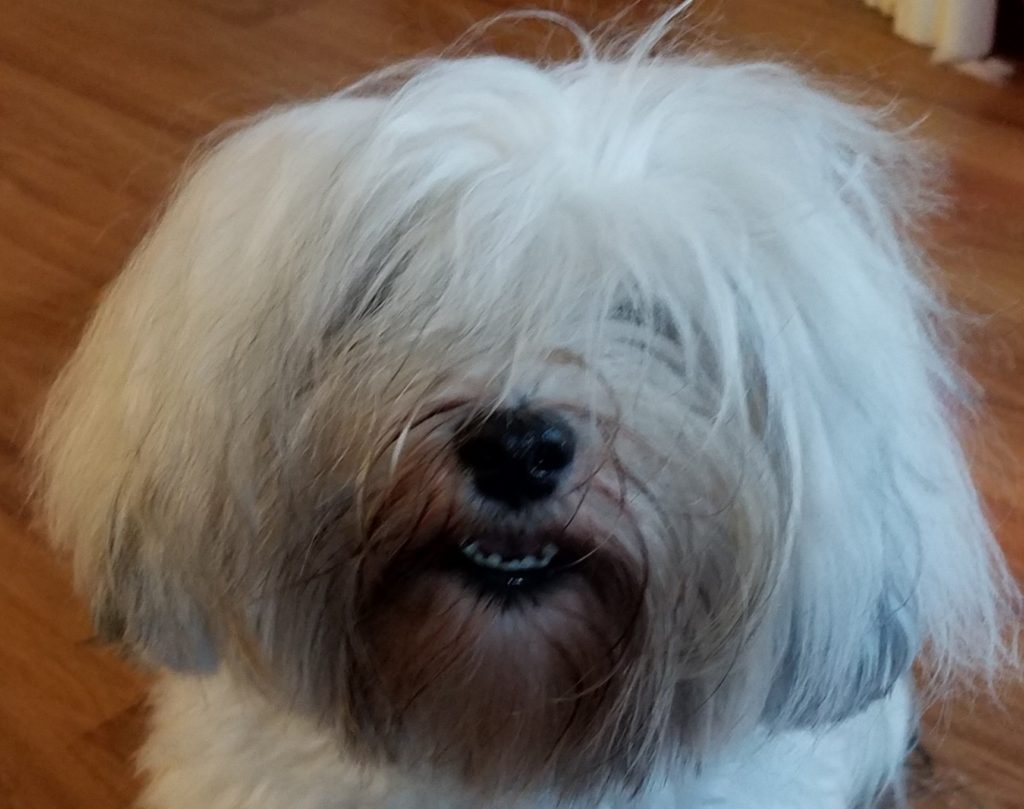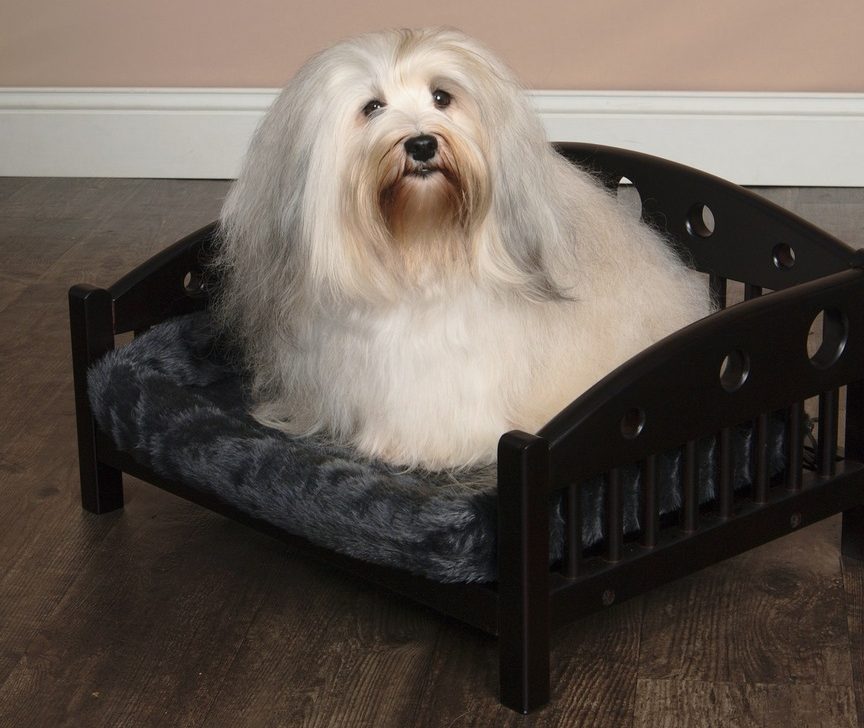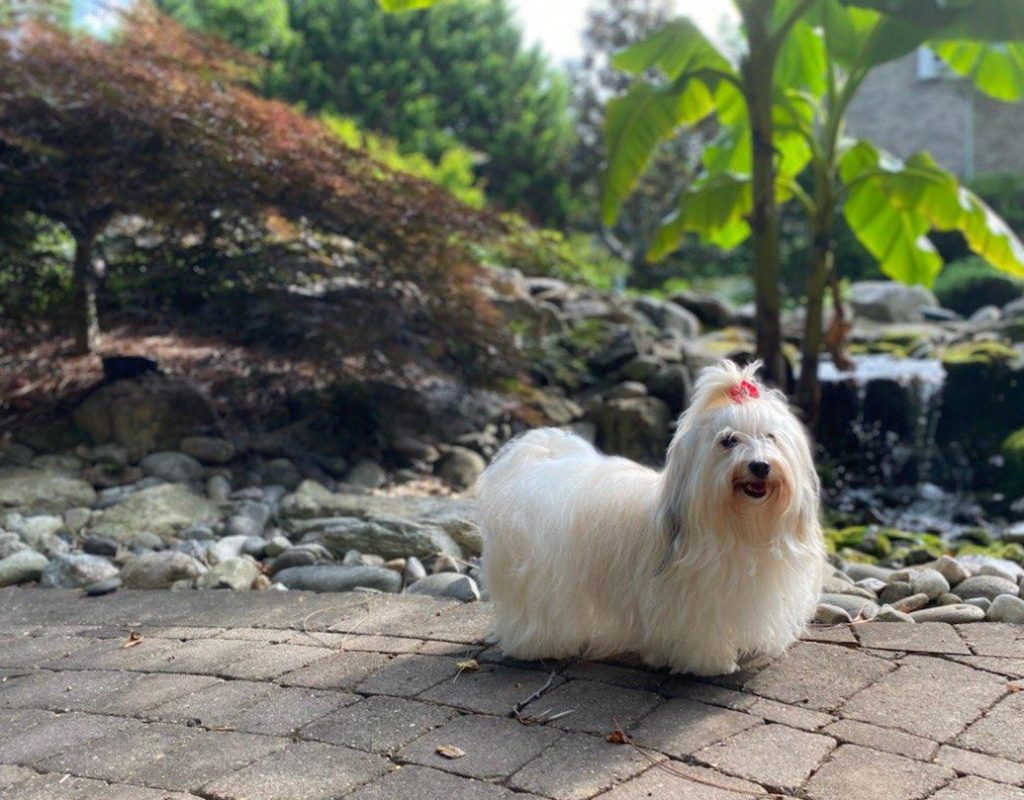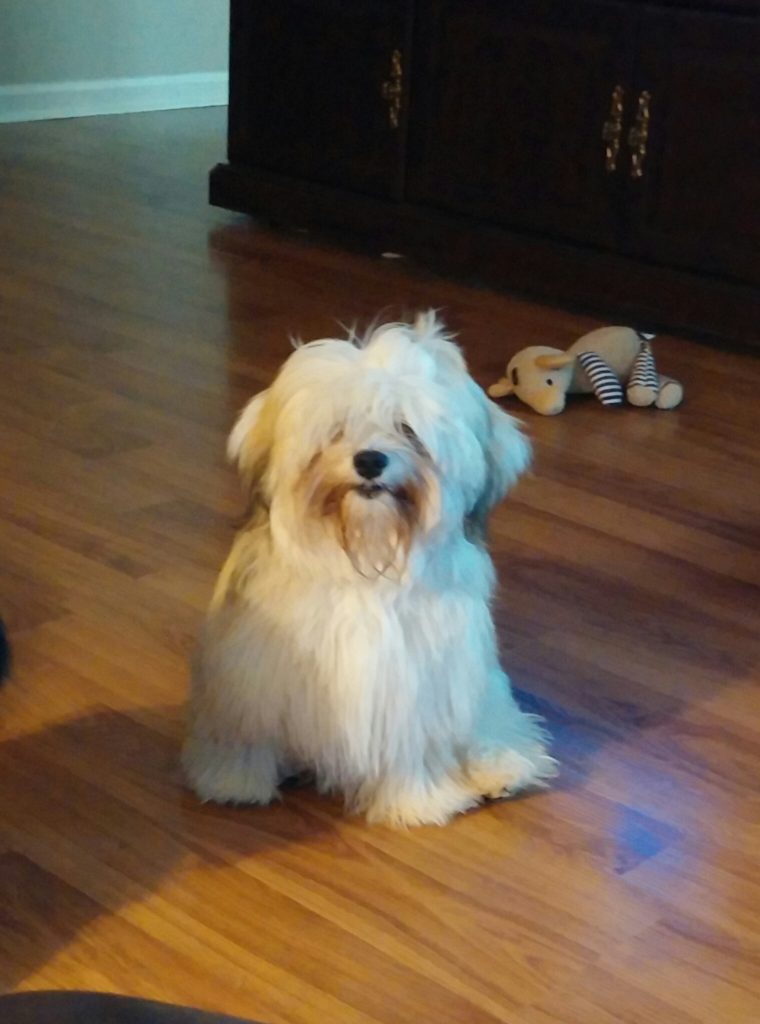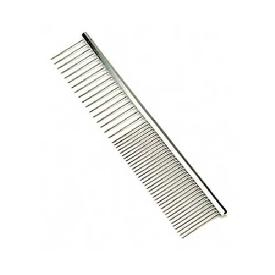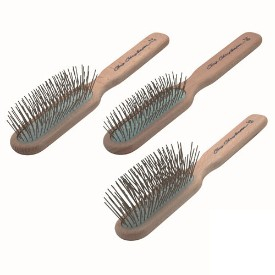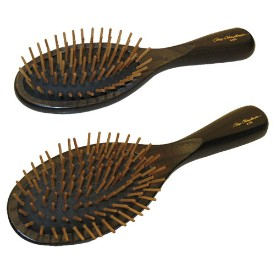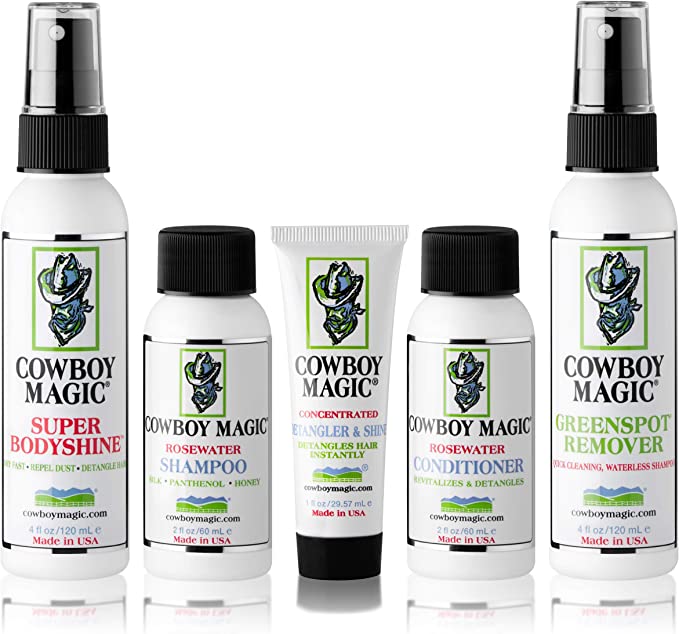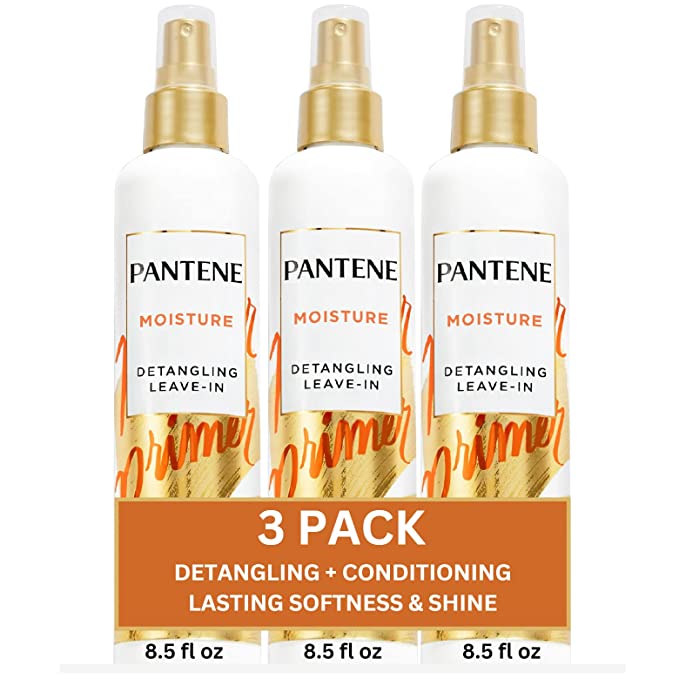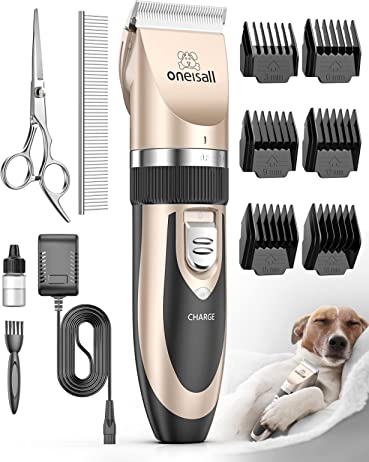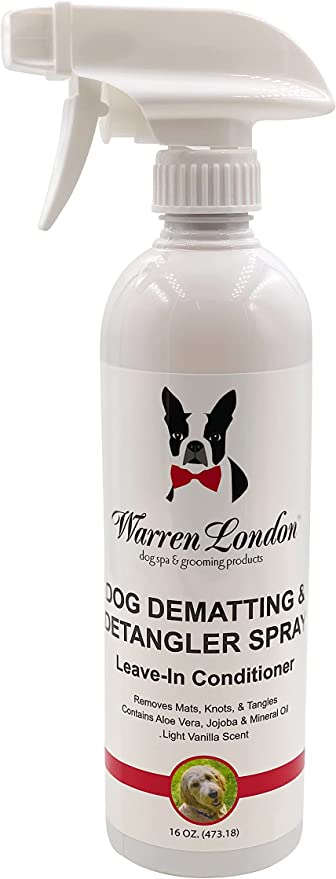The Grooming Process
There are several choices for your havanese when choosing the appearance you like. There is no right or wrong look when you have a companion pet. Some will choose to keep a short puppy cut, some will just have a shorter trim, others with cords or in a full coat. Whatever is the easiest for you to manage and maintain is the best choice for you. Some will choose bangs, shorter top hairs, others with topknots and bows, others pigtails while others choose nothing but the long flowing hair. Whatever you choose is fine. For show prospects, No trimming or cutting is allowed other than making a natural rounded foot, and hygiene clips around the anus and pee pee area.First of all, when trying to groom your dog, or when taking your dog to the groomer you will need to decide what YOU want your dog to look like. Below are some examples to help you decide what appearance you like. There may be several styles that are very appealing to you, but not so much to others. Secondly, depending on what activities you participate in with your dog, you may need a specific grooming style. Below you will see some examples and techniques on how to make those pups look cute as a button. There are several pictures of the same dog sporting different looks.
Head Appearance Options:
Body Appearance Options:
What Does a Full Body Groom Entail?
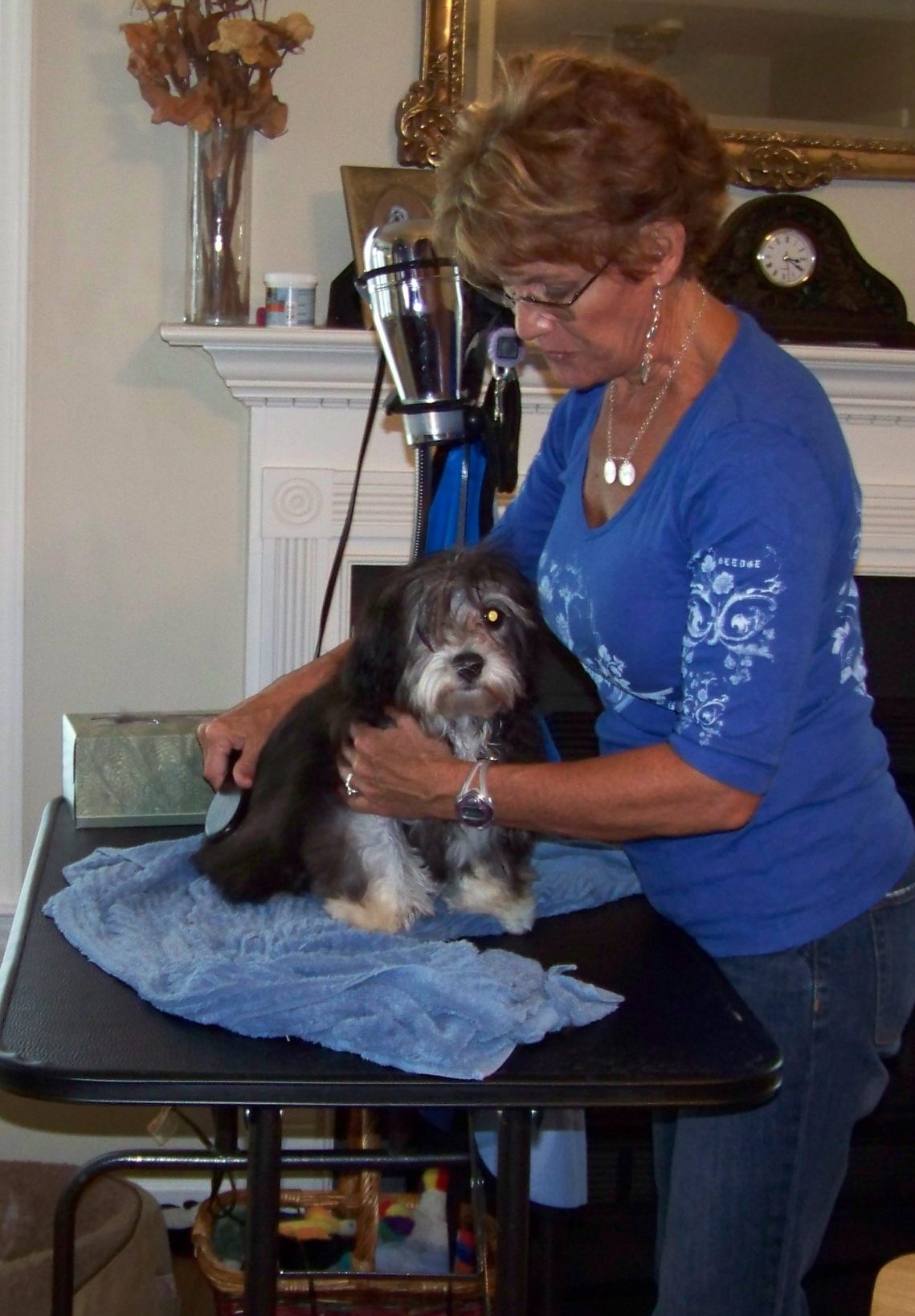
Good grooming habits begin at an early age as every day puppy care. When puppy arrives to your home, he/she will have already been started on grooming habits as early as week 2 of life. Daily, they will have been handled and inspected with special attention paid to their entire body parts that will be mentioned below. They will have their nails and hinnys trimmed every 2 weeks.
All puppies are wiggly, but should be taught to sit, stand or lie still to have their bodies inspected for rashes, fleas, sores, cuts, ticks, bumps, hitchhikers in their hair or dirt in their ears. During this exam, ensure a safe place so that your puppy will not fall from a great height injuring themselves. The floor is a good place to start training a wiggly puppy, or having someone to help you hold the puppy. Eventually, once they learn to hold still, you can place them up on a table or counter top. During the exam, you should inspect and touch the teeth, gums, pads of the feet, toenails, tail, earlobes and the insides of the ears. If they fuss, or growl, or try to bite, correct the behavior with a correction noise and words, and continue. If they are being good and doing what you want, reinforce that with positive praise. Talk with your pet throughout the entire grooming time. It usually helps if it’s in a normal moderate voice and tone. If they learn as a young puppy that you will stop grooming them if they growl or nip at you, they will continue and you will have lost the battle. They need to learn, this is what puppies have done to them, with them and they will have to learn to tolerate the activity.
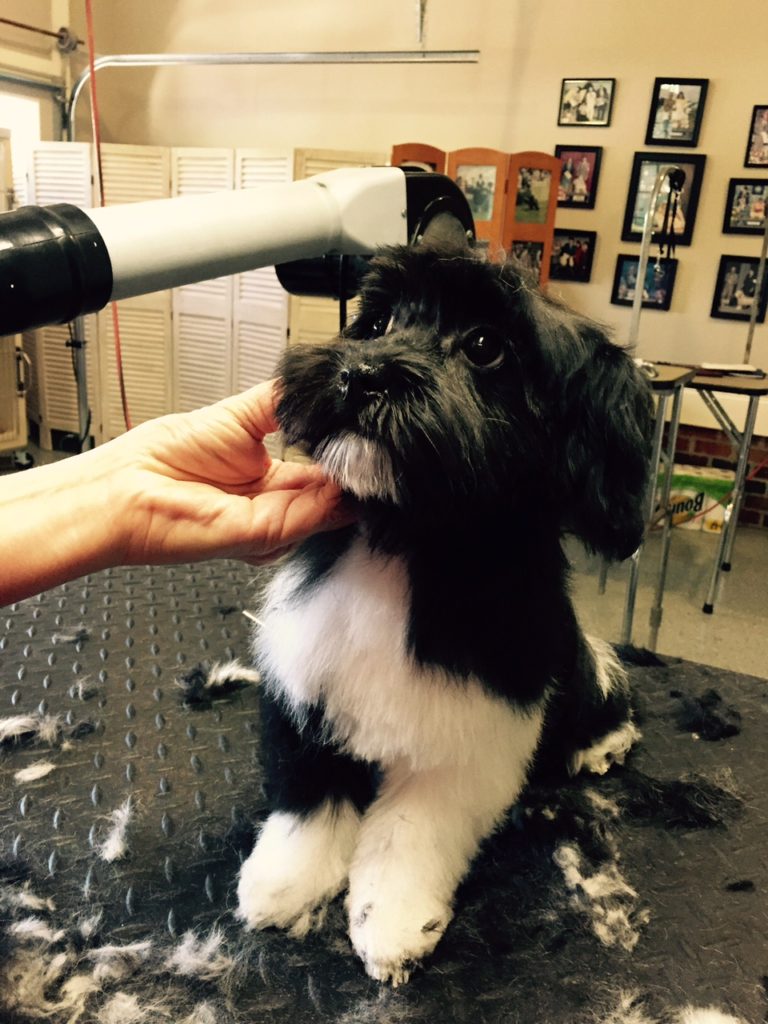

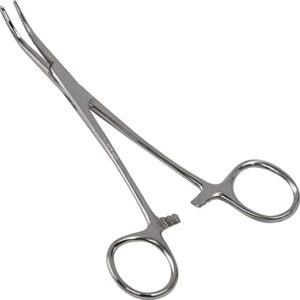
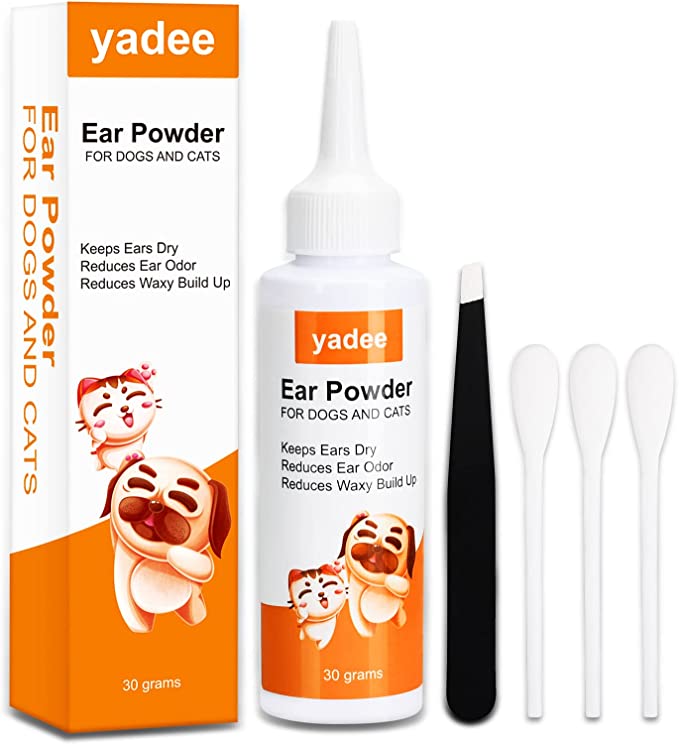
Ear hair from inside the ear canal should be minimal. Because your Havanese sheds very little, the ear hairs will not fall out as in a shedding breed. Too much ear hair can lead to frequent ear infections. To reduce the chance of infections, pull the hairs deep inside the ear. There is ear powder you can purchase to help grab the hair and decrease the pain when pulling the hairs. You can use a pair of blunt tweezers, hemostats or your finger tips, making sure not to place any device into the ear canal. Take the deep hairs in a clump, twist them around a couple times in one direction and then gently pull them out. You can also pull a few hairs at a time with your fingers or tweezers. Don’t pull the hairs on the outer rim of the ear, this will hurt, those may be trimmed with a little hair trimmer. Also, examine the eyes for excessive tears and debris. You can wash the hair around the eyes with a warm wet washcloth daily to keep crusties and debris to a minimum. If debris builds up, it can promote yeast infections around the eyes and irritate the skin. There are some products that can be purchased to assist with eye tear stains.
Taking 10-20 minutes each day should be a very pleasurable bonding time for you and your puppy. In the wild, wolves and other canines groom each other as part of their social interaction with the pack. The incisors (their front teeth) are very effective combs. The little nibbles that they make on their pack-mate’s bodies stimulates their skin and has a calming effect. Brushing helps keep their coats tangle free, requiring less bathing and time consuming grooming. You’ll only need to bath your puppy about every 2-3 weeks or if he/she becomes dirty or smelly. Bathing too often can cause dry skin, which could lead to unwanted scratching, irritation and skin sores. When needed, use a proper dog shampoo, lukewarm water and a gentle scrubbing motion from head to tail, taking care not to get soap or water into the eyes or ears. Rinse thoroughly, towel dry and then dry with a hairdryer. Remember, when using a hairdryer, not too hot and ensure safety with holding help the first few times because the noises can be scary. Wash and dry as quickly as possible so that puppy does not get chilled. Clip nails and trim the hair between the pads of the paw regularly about every 4-6 weeks. If you are unsure how to do any of the grooming techniques described above, consult your vet or a professional pet groomer for assistance. Don’t just trust any groomer, you need to get references that they are gentle with training puppies how to be groomed. Not all groomers are gentle nor patient. Not only is grooming a good bonding experience, but an effective way to notice subtle changes in your puppy’s health, skin and hygiene. When in doubt, seek out the professionals.
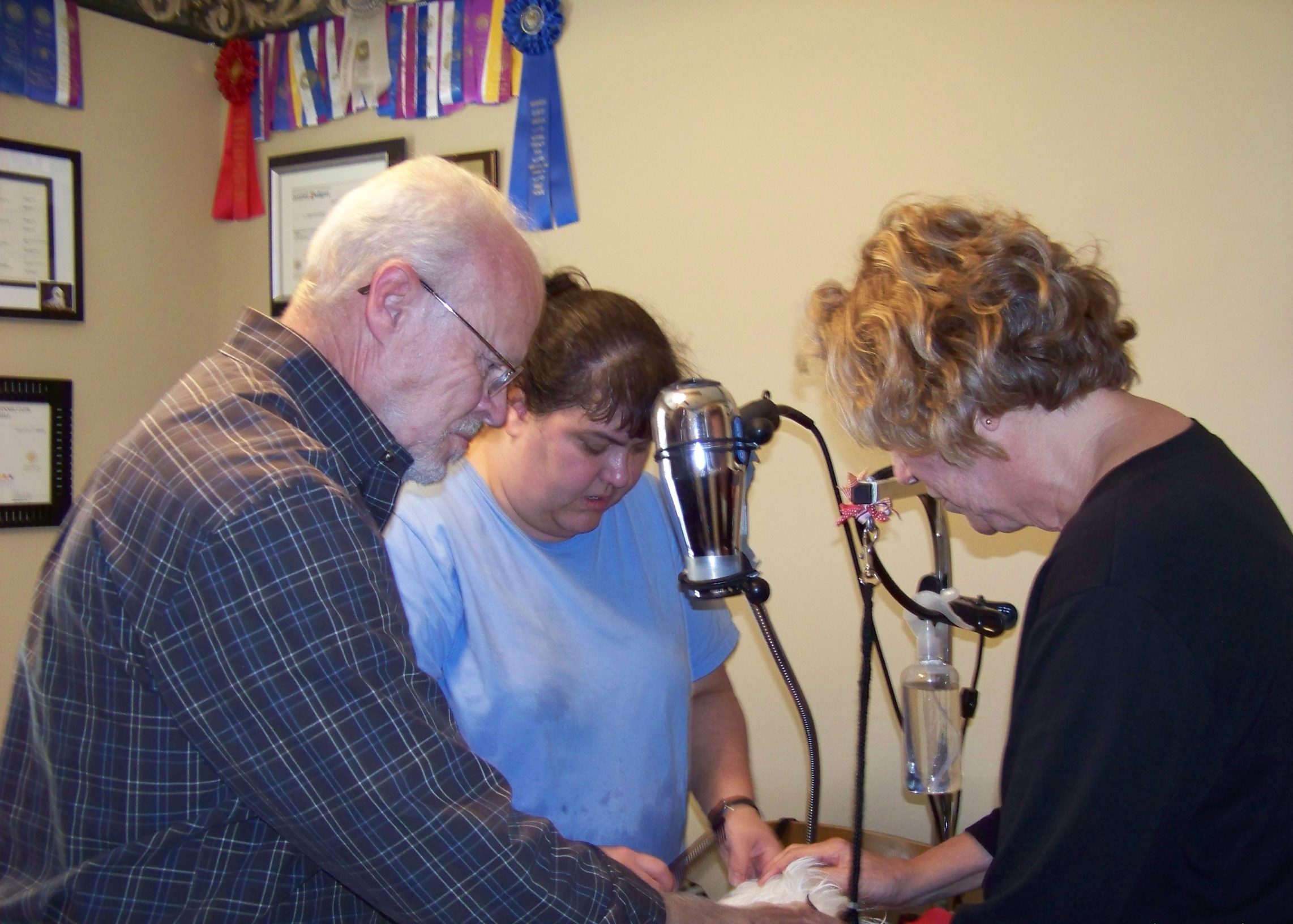
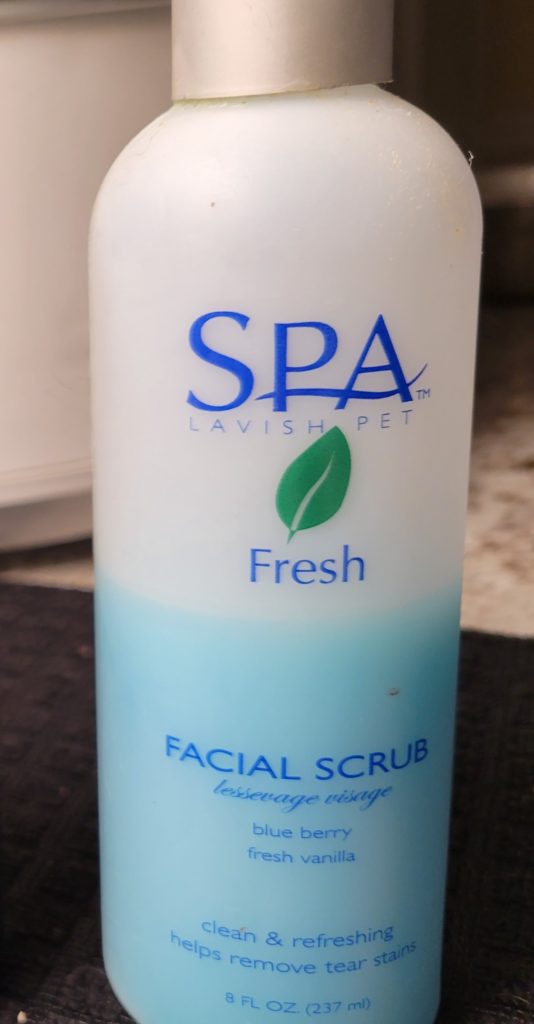
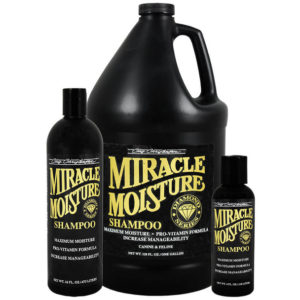
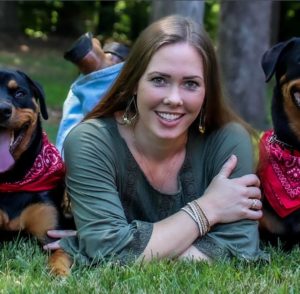
Local Groomers
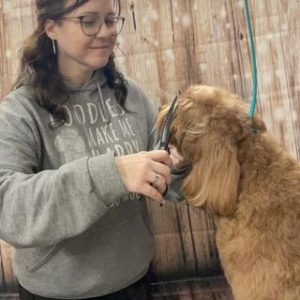
Get ready for the Mats around 9 months
Around 9 months of age to about 15 months, the havanese begins to have coat changes. This can be a very frustrating time. This is the time where your puppy will be loosing his/her puppy coat, which will be replaced by the adult coat. It will seem that as soon as you bathe and brush, there are mats the next minute. It’s best to make sure you are brushing the hair while it has been spritzed with some kind of conditioner, detangler, water, or spray so as not to create static electricity. Products I have used with success are human Pantene detangler, cowboy magic detangler, Isle of Dog Detangler, or Isle of Dog conditioning spray. You will have to experiment to find what product you like with your dog’s coat. Not all coats are the same.
Grooming Videos

